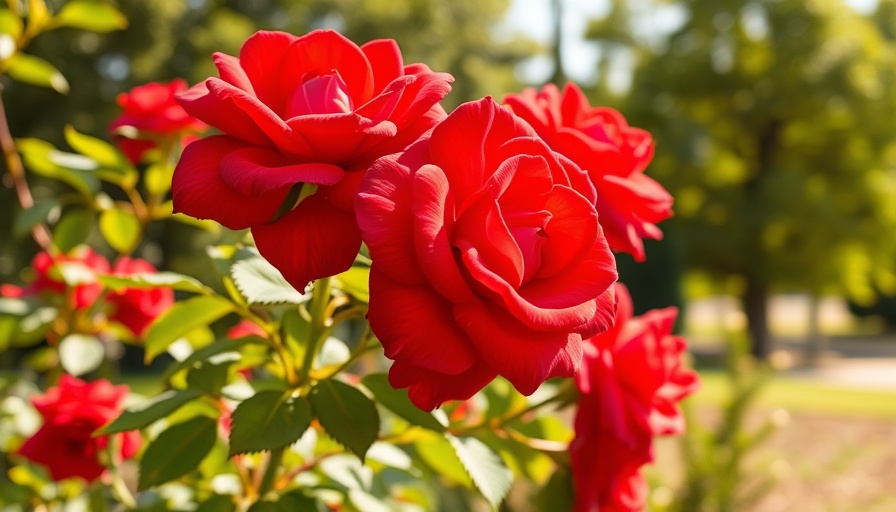
Unveiling the Beauty of Knockout Roses
As the weather warms and gardens awaken, knockout roses emerge as a centerpiece in garden design. Their vibrant hues and prolonged blooming seasons make them an essential choice for homeowners eager to create visually stunning outdoor spaces without the added burden of extensive maintenance. These perennial favorites have garnered attention since their introduction in 2000, fundamentally transforming how we perceive rose gardening.
The Essence of Knockout Roses
Designed for the modern gardener, knockout roses stand out due to their unique combination of beauty and resilience. Unlike traditional roses, which often require substantial care and attention, knockout roses are bred for hardiness. They thrive in a variety of climates, and their self-cleaning feature reduces the need for ongoing maintenance. This makes them not just practical but also appealing as a solution for busy homeowners who desire lush landscapes.
Why Choose Knockout Roses for Your Garden?
When designing a new garden or refreshing an existing one, incorporating knockout roses can elevate both the aesthetic and functionality of the space. Here’s why:
- Disease Resistance: These roses are remarkably hardy, resistant to common diseases like black spot and mildew that plague more traditional varieties. This means less worry about managing plant health and more time to enjoy the blooms.
- Prolonged Blooming Season: Knockout roses blossom repeatedly, showcasing vibrant flowers from spring until the frost, ensuring your garden remains colorful and lively throughout the seasons.
- Drought Tolerance: Once these plants are established, their drought-resistant nature allows them to thrive even with minimal watering, a vital trait for those in areas prone to dry spells.
- Versatility: Perfect for borders, mass plantings, or ornamental containers, knockout roses can enhance any garden layout while providing structure and charm.
Diverse Types of Knockout Roses to Explore
Not all knockout roses are created equal; they come in a variety of colors and forms, allowing homeowners to mix and match to suit their unique gardening style. From the classic red knockout rose with its striking beauty to softer hues like peach and pink, each variety adds a new dimension to the garden. Experimenting with different types can result in a stunning visual symphony, inviting admiration from neighbors and guests alike.
The Emotional Connection with Roses
There’s something inherently uplifting about flowers, and knockout roses are no exception. Their vibrant blooms evoke joy, and having them in your garden can create a sense of tranquility and beauty that enriches your home environment. Whether enjoyed as solitary plants or in charming arrangements, knockout roses can serve as beautiful reminders of nature’s ability to inspire and uplift.
Actionable Insights for Homeowners
Add knockout roses to your yard strategy not just for aesthetics but as a wise investment in your garden’s future. Plan your planting around light exposure, and remember to choose spot sizes that consider their mature growth. These roses complement a range of annuals and perennials, from lavender to salvia, resulting in a delightful tapestry of textures and colors.
Final Thoughts: Why Knockout Roses Deserve a Spot in Your Garden
Knockout roses embody the ideal combination of beauty and low maintenance, making them a must-have for any homeowner. Their incredible resilience against disease and drought, paired with their continuous blooming ability, not only simplifies garden care but enhances your property’s overall charm. May is the perfect time to explore these floral wonders, so dig in, add these stunning plants to your garden, and watch your outdoor space transform like never before.
Join the knockout roses revolution this season and bring vibrant life to your outdoor spaces effortlessly!
 Add Row
Add Row  Add
Add 




Write A Comment